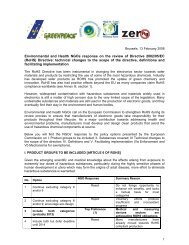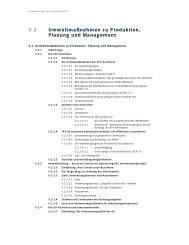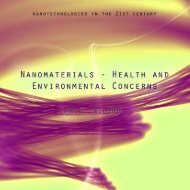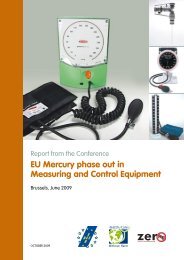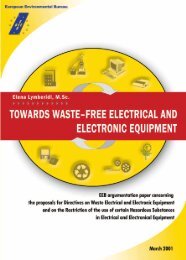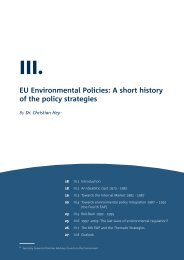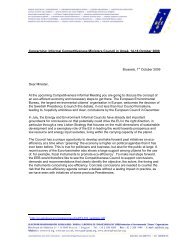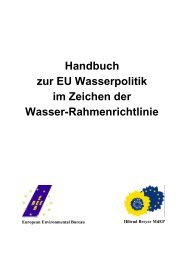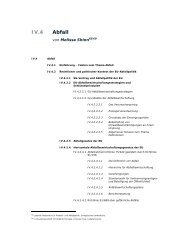EMAS III - European Environmental Citizens Organisation for ...
EMAS III - European Environmental Citizens Organisation for ...
EMAS III - European Environmental Citizens Organisation for ...
Create successful ePaper yourself
Turn your PDF publications into a flip-book with our unique Google optimized e-Paper software.
consultants and verifiers involved with <strong>EMAS</strong>, rather than the environment. Despite this,<br />
ANEC, ECOS, and EEB welcome some of the proposed changes, such as the announced<br />
development of sector-specific best practice documents including indicators, as positive<br />
steps in the right direction.<br />
However, ANEC, ECOS, and EEB underline the need <strong>for</strong> significant changes to ensure<br />
credibility of the system and to differentiate <strong>EMAS</strong> compliant organisations from those which<br />
only con<strong>for</strong>m to ISO 14001 6 . Such measures include the following:<br />
• At the very minimum, industrial <strong>EMAS</strong> organisations must comply with BAT 7 , i.e. must<br />
provide evidence that they comply, or are even better than the state-of-the-art as<br />
described in the BREF documents 8 , where these exist. Where such documents<br />
contain per<strong>for</strong>mance ranges, the <strong>EMAS</strong> registered organisation should have a<br />
per<strong>for</strong>mance corresponding to the top of the range.<br />
• The envisaged sectoral reference documents must include best practice<br />
environmental per<strong>for</strong>mance levels, and must be binding rather than voluntary.<br />
Further, the Commission should have a clear obligation to come up with working<br />
plans based on agreed priorities and targets similar to the existing Energy-Using<br />
Products Directive 9 . These documents should be based on a high level of ambition<br />
awarding only organisations with a better than average environmental per<strong>for</strong>mance<br />
which is significantly better than the legal minimum, and should provide benchmarks<br />
covering all significant direct and indirect environmental aspects.<br />
• These sectoral reference documents should also identify a limited number of relevant<br />
and comparable (sub) sector-specific indicators. These indicators ought to cover not<br />
only direct but also indirect impacts (in particular from products) and should be<br />
compulsory, once available. Sufficient resources should be made available <strong>for</strong> this.<br />
• The use of the <strong>EMAS</strong> logo on products or in connection with product<br />
in<strong>for</strong>mation/advertising must be strictly prohibited. Such use would open the door to<br />
misuse and confusion with eco-labels.<br />
• Any incentives <strong>for</strong> organisations or promotion activities should not be accepted until<br />
<strong>EMAS</strong> has been trans<strong>for</strong>med into a system awarding only top per<strong>for</strong>mers.<br />
6 ISO 14001:2004 <strong>Environmental</strong> management systems - Requirements with guidance <strong>for</strong> use<br />
7 BAT – Best Available Technology<br />
8 Best Available Technique Reference Documents<br />
9 Directive 2005/32/EC establishing a framework <strong>for</strong> the setting of eco-design requirements <strong>for</strong> energyusing<br />
products<br />
2



